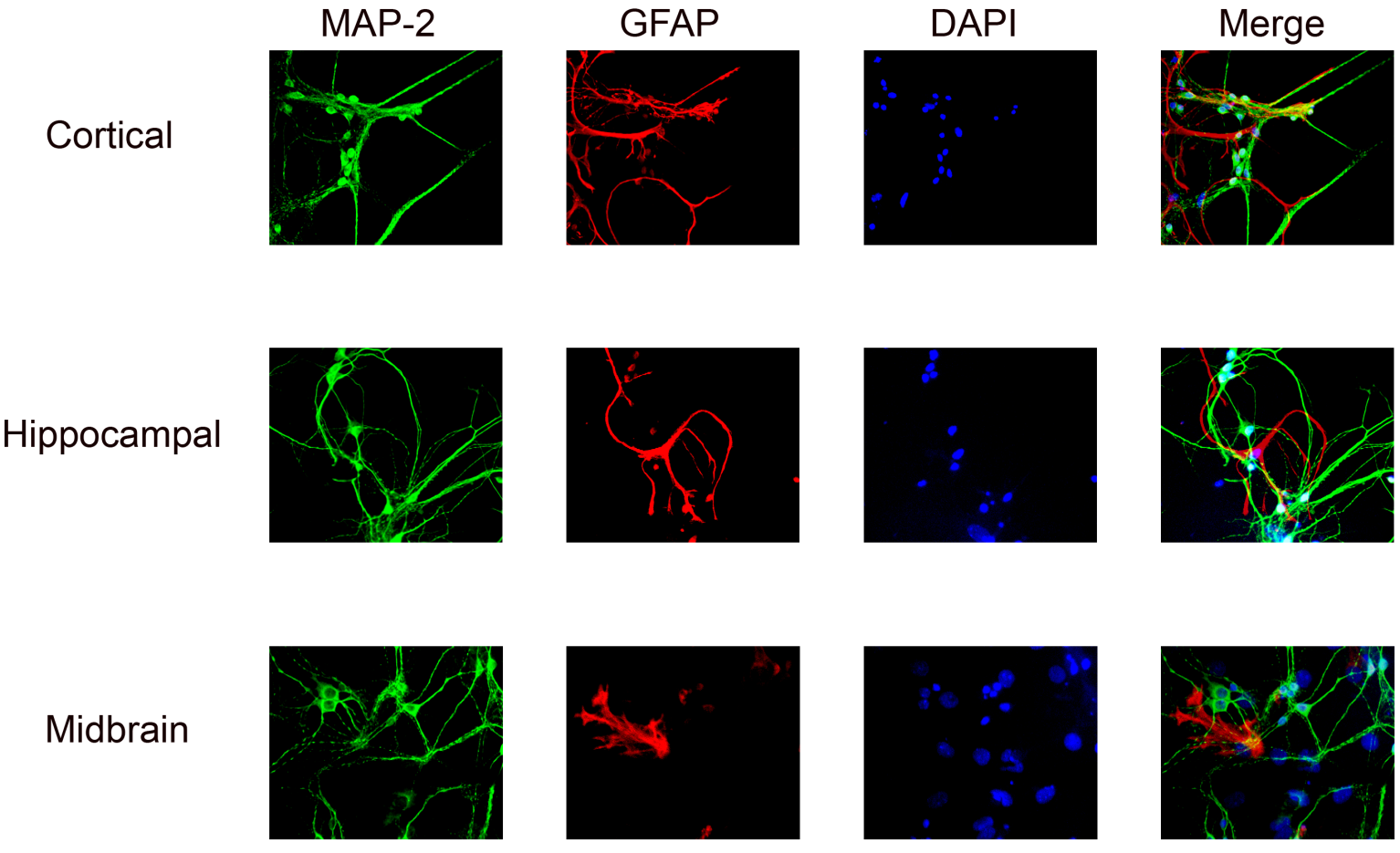Rodent Primary Neurons and Glia Culture
Primary neuronal or glia cultures derived from wild-type or genetically engineered rodents represent a powerful
tool to study mechanism of action and potential toxicity of compounds. Primary cultures also allow investigators to evaluate the effects of pharmaceutical agents, gene over expression, or transcript silencing, on neuronal development and survival, as well as changes in biomarkers expression.
Figure 1: Primary cortical, hippocampal, and midbrain cells from embryonic day 18.5 (E18.5) C57BL/6 mouse. Cells were grown in vitro for 14 days. Immunocytochemistry staining were performed with Millipore MAB360 Anti-GFAP (Glial fibrillary acid protein) labeling Astrocytes, and Millipore AB5622 Anti-MAP-2 (microtubule-associated protein-2) labeling Neurons. Secondary antibodies used are from Invitrogen Alexa Fluor series. Cells were counterstained with DAPI (4′,6-diamidino-2-phenylindole), which fluorescently stain DNA. Imaging was performed on a Zeiss AXIO Imager A1 with a conjoining AxioCAM MRc5 and visualized using a 20 X objective.



